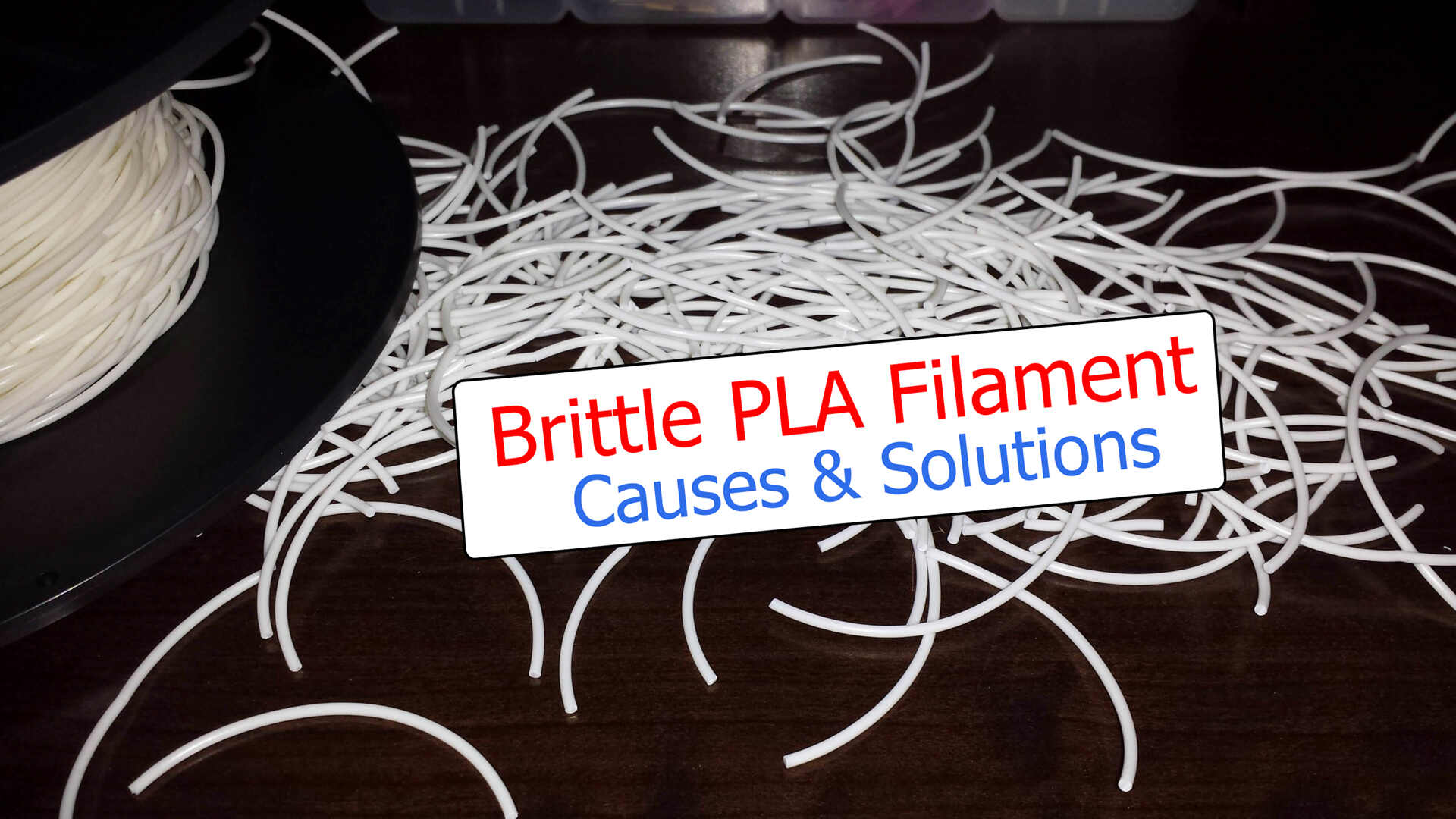Your shopping cart is empty!

Why Does PLA Filament Get Brittle: Causes and Solutions
- Abdulrahman Alhamed
- 07 Mar 2023
- Uncategorized
- Beginner
- 10199
PLA filament is one of the most popular materials used in 3D printing. It is a biodegradable thermoplastic derived from renewable resources such as cornstarch or sugarcane. PLA filament is easy to use, has a low melting point, and produces prints with good detail and surface finish. However, one of the challenges associated with PLA filament is that it can become brittle over time.
Brittleness is the tendency of a material to break or crack under stress, without significant deformation. In the case of PLA filament, brittleness can lead to failed prints, reduced strength and durability, and difficulty in post-processing. This can be frustrating for 3D printing enthusiasts who want to produce high-quality prints that last.
In this article, we will explore the causes of brittle PLA filament and provide solutions to prevent it. By understanding the factors that contribute to brittleness and implementing best practices for handling and storing PLA filament, you can improve your 3D printing results and avoid the frustration of failed prints.
Causes of Brittle PLA Filament
- Environmental factors: PLA filament can absorb moisture from the air, which can lead to hydrolysis (the breakdown of the plastic due to water). This is particularly problematic in humid environments, where moisture can accumulate on the filament over time. Similarly, exposure to extreme temperatures (either hot or cold) can cause thermal degradation, which can also make the filament brittle.
- UV exposure: PLA filament is susceptible to degradation when exposed to UV light, such as sunlight or artificial UV sources. UV light can break down the chemical bonds in the filament, leading to discoloration, warping, and brittleness.
- Mechanical stress: PLA filament can become brittle when subjected to excessive force or strain. This can occur during the printing process, such as when the filament is forced through a nozzle or when the print bed is being leveled. Over time, repeated mechanical stress can cause the filament to develop microcracks, which can eventually lead to failure.
- Low-quality filaments: PLA filament can be made with varying levels of quality, depending on the manufacturer and production process. Lower-quality filaments may contain impurities, inconsistent particle size, or other defects that can cause the filament to become brittle
By understanding these factors, 3D printing enthusiasts can take steps to prevent or mitigate the effects of brittleness on PLA filament. In the next section, we will explore the consequences of using brittle PLA filament.
Consequences of Brittle PLA Filament
- Failed prints: When PLA filament becomes brittle, it is more prone to breaking or snapping during the printing process. This can lead to failed prints, where the object being printed does not adhere properly to the print bed or is otherwise deformed or unusable. Failed prints can be frustrating and time-consuming, especially when working on complex or large-scale projects.
- Reduced strength and durability: Brittle PLA filament is also less strong and durable than non-brittle filament. This means that prints made with brittle PLA may be more prone to cracking, breaking, or otherwise failing over time. This can be problematic for functional prints, such as parts for machines or prototypes, where strength and durability are critical.
- Difficulty in post-processing: Finally, brittle PLA filament can be difficult to post-process, such as by sanding, painting, or smoothing. This is because the filament is more likely to break or chip when subjected to additional stress or manipulation. This can make it more difficult to achieve the desired finish or texture on the final print.
By understanding the consequences of using brittle PLA filament, 3D printing enthusiasts can appreciate the importance of preventing brittleness in the first place. In the next section, we will explore some strategies for preventing or mitigating the effects of brittleness on PLA filament.
Solutions to Prevent Brittle PLA Filament
- Proper storage and handling: PLA filament should be stored in a cool, dry place, away from direct sunlight and moisture. This can help prevent hydrolysis and thermal degradation. Additionally, it is important to handle the filament carefully, avoiding any excessive force or strain that could cause microcracks or other damage.
- Filament dryer: PLA filament that has absorbed moisture from the air can become brittle and prone to breaking. Using a filament dryer can help remove moisture from the filament, improving its strength and flexibility.
- Adjustment of printing parameters: Adjusting printing parameters such as temperature, fan speed, and layer height can also help prevent brittleness in PLA filament. For example, printing at a slightly higher temperature or with a slower fan speed can reduce thermal stress on the filament. Similarly, adjusting the layer height can help prevent excessive mechanical stress on the filament during the printing process.
- Use of different materials: If brittle PLA filament continues to be a problem, it may be worth considering using different materials altogether. While PLA is a popular and versatile material, other plastics such as ABS, PETG, or Nylon may offer better durability, strength, or resistance to certain environmental factors.
By implementing these strategies, 3D printing enthusiasts can minimize the risk of PLA filament becoming brittle and achieve better quality and more reliable prints.
Related Products
SUNLU FilaDryer S1 Plus - 3D Printer Filament D...
S$67.14 S$71.07 S$67.14
SunLu 1KG 1.75mm PLA Filament
Discontinued
SUNLU FilaDryer S2 - 3D Printer Filament Dryer Box
S$95.71 S$95.71

 International
International Singapore
Singapore Malaysia
Malaysia Thailand
Thailand Vietnam
Vietnam
-268x268.jpg)

